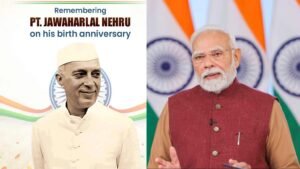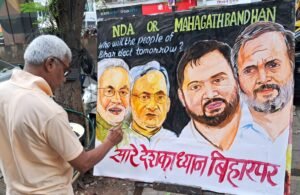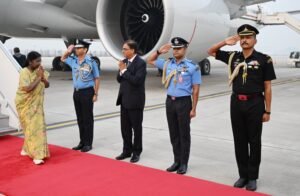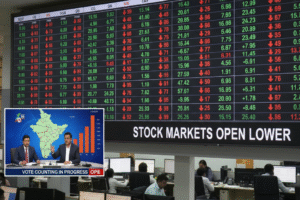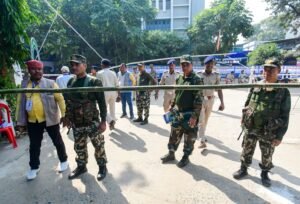The elections, held in three phases, saw 63.45% voter turnout, slightly lower than the 65.52% recorded in the last assembly elections in 2014. Of the 90 seats, 24 constituencies voted in the first phase, 26 in the second, and 40 in the third. The fate of 873 candidates, including several prominent political figures, will be revealed by Tuesday evening.
Main Contenders and Political Stakes
The Congress-National Conference (NC) alliance, People’s Democratic Party (PDP), and the Bharatiya Janata Party (BJP) are the primary stakeholders in this high-stakes election. Exit polls conducted on Saturday suggest the NC-Congress alliance is in the lead, with the NC likely to secure the largest share of seats. The BJP, which won 25 seats in 2014, is expected to slightly improve its tally, while the PDP is predicted to suffer significant losses, possibly winning fewer than 10 seats.
Prominent figures in the election include:
- Omar Abdullah of the NC, contesting from Budgam and Ganderbal.
- Sajad Gani Lone of People’s Conference, vying for Handwara and Kupwara.
- Tariq Hamid Karra, Pradesh Congress Committee president, contesting from Batamaloo.
- Ravinder Raina, BJP’s state president, standing for the Nowshera seat.
- Iltija Mufti of the PDP, daughter of former Chief Minister Mehbooba Mufti, contesting in Bijbehara.
Other notable candidates include Waheed Para (PDP) from Pulwama, Altaf Bukhari (Apni Party) from Chanapora, Mohammad Yousuf Tarigami (CPI(M)) from Kulgam, and former deputy chief ministers Muzaffar Hussain Baig and Tara Chand.
Political Speculations and Reactions
With exit polls placing the NC-Congress alliance in pole position, the possibility of a post-election alliance with the PDP has been widely discussed. Farooq Abdullah, NC president, stated that his party is open to collaborating with the PDP if needed to form the government, while also reiterating his call for the restoration of statehood to Jammu and Kashmir. He criticized the move to grant the Lieutenant Governor (LG) the power to nominate members to five reserved seats in the Assembly, vowing to take the issue to the Supreme Court if necessary.
On the other hand, BJP state chief Ravinder Raina expressed confidence that his party would emerge as the single largest force, securing 35 seats and forming a government with the support of independents and like-minded candidates.
Iltija Mufti of the PDP, critical of the LG’s nomination of five BJP-affiliated members, condemned it as “brazen pre-result rigging and shameful manipulation.”
Amid these speculations, Sheikh Abdul Rashid (Engineer Rashid), a Lok Sabha MP and leader of the Awami Ittehad Party, urged the INDIA bloc, the PDP, and other regional parties to unite for the restoration of statehood, insisting they should not form a government until this demand is met.
Security and Counting Arrangements
The administration has finalized comprehensive security measures across 20 district headquarters, ensuring the smooth conduct of counting operations. According to Election Commission officials, a three-tier security setup has been implemented at all counting centres to safeguard the electoral process in the restive border region, which has long been a hotspot for insurgency and cross-border infiltration. Security personnel have taken positions at counting centres in both the Kashmir Valley and Jammu.
Pandurang K Pole, the Chief Electoral Officer of Jammu and Kashmir, visited the Degree College Ganderbal counting centre on Sunday to review preparations. He assured that the counting process would be conducted with accuracy, transparency, and adherence to EC protocols. Only authorised agents of candidates and counting staff will be permitted inside the halls, and the results will be publicly announced after each round of counting.
What to Expect
As Jammu and Kashmir braces for the final results, the political atmosphere is heating up. While the NC-Congress alliance appears poised for victory, the outcome remains uncertain. The election results will not only determine the future government of the union territory but also reflect the evolving political dynamics in the post-Article 370 era.






